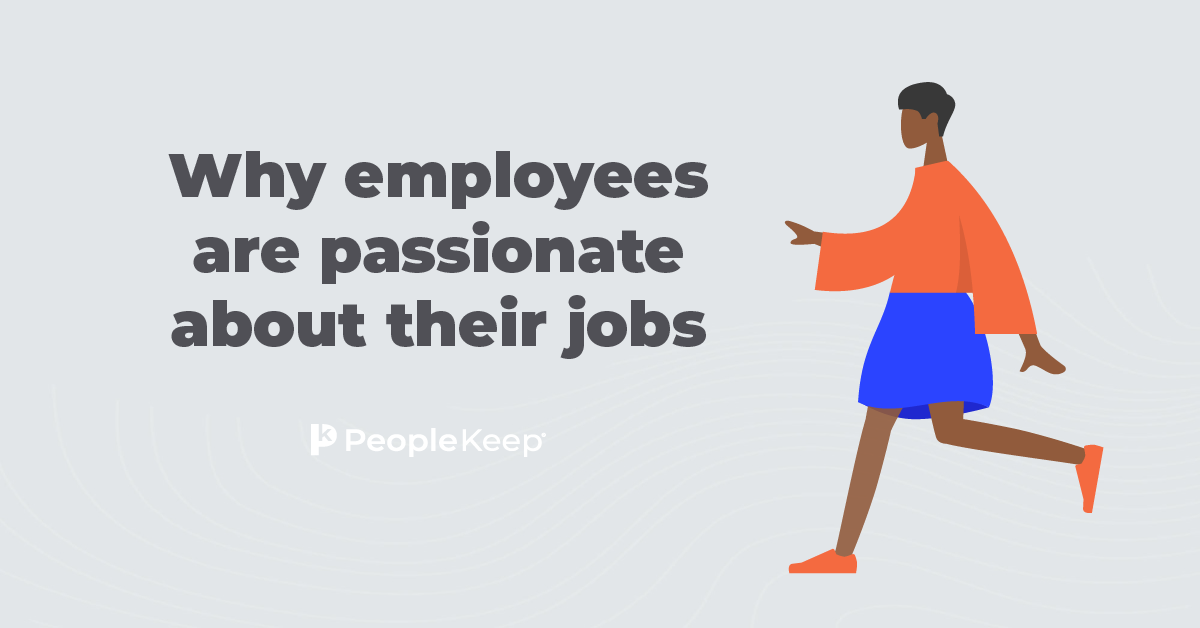Reverse mentoring: What it is and why you should encourage it
By Elizabeth Walker on June 28, 2023 at 9:20 AM
Todays workforce is now more diverse than ever1, it's likely that your team includes individuals with a wide range of skills and expertise that can benefit your organization. While focusing on traditional mentoring will enable your older or more senior employees to teach younger workers, reverse mentoring can take skill sharing to the next level.
Reverse mentoring isn’t a new concept. However, employers now use it more often to increase knowledge sharing, improve collaboration, and promote respect. It can also help reduce turnover and boost diversity, equity, and inclusion (DE&I) efforts.
This article will take you through the ins and outs of reverse mentoring, including its advantages and how you can start a reverse mentoring program at your organization.
Find out which employee benefits each generation cares about the most with our comparison chart
What is reverse mentoring?
Reverse mentoring is when a junior employee, whether in age or job title, shares their skills, knowledge, and unique perspectives with a more senior employee. This style of mentoring bridges the gaps in knowledge that employees of certain generations may have—particularly digital skills—by providing an opportunity for coworkers to learn from each other.
A major goal of reverse mentoring is improving intergenerational relationships in the workplace. It shows your junior staff, especially Millennial and Gen Z workers, that management hears them and their expertise is valuable. Better yet, reverse mentoring can build confidence and prepare junior employees for future leadership roles.
How does reverse mentoring work?
Traditional mentoring is typically when an older or more tenured employee teaches a younger or newly hired employee everything they know. But reverse mentoring makes the senior employee the mentee and the junior employee the mentor. This creates an equal opportunity for both employees to learn new skills and build better working relationships.
Keep in mind that reverse mentoring shouldn’t only focus on age. Pairing various senior management levels, like CEOs, VPs, senior executives, and directors, with newer workers is also important. For example, a senior director can gain a better perspective on their business from someone that works in an entry or intermediate-level role.
Some examples of how reverse mentoring could work include:
- Within a marketing department, a Millennial employee teaches a Baby Boomer the best ways to use artificial intelligence (AI) technology to communicate more effectively to their customers.
- A mid-level manager on a PR team mentors a CEO on increasing brand awareness using various social media platforms.
- A recent college graduate on a business development team shows a senior executive how to create and host more engaging webinars. Conversely, the senior person can teach the junior person leadership and communication skills.
- A Gen Z employee regularly updates a Gen X employee on industry-specific technology advancements and how they can use them at their company.
What are the advantages of reverse mentoring?
Reverse mentoring has several benefits for employees. But it also helps employers have a more productive and inclusive workplace. To give you a better idea, we’ll review five advantages of reverse mentoring.
1. It supports DE&I efforts
It can be challenging for senior leaders to know their employees on a deeper level. Not only does reverse mentoring expose leadership to new skills and expertise they may not know, but it also exposes them to other perspectives and experiences. This removes barriers and misconceptions in the workplace leading to a more inclusive work culture and can make your company more attractive to job seekers.
Additionally, it’s an effective way for underrepresented employees, such as minorities, individuals with disabilities, and LGBTQ+ employees, to work closely with senior leadership, share their experiences, and prepare them for higher levels positions.
2. It closes the generation gap
If you have a staff with employees from different generational backgrounds, reverse mentoring can help you bridge the gap between those generations. It’s a way to increase communication, understanding, and collaboration, making your workplace more productive and efficient.
For example, you may have some employees that are resistant to change or hesitant to use new technology. By working with employees from other generations, they can discuss their concerns in a safe space and learn new innovative techniques to help them excel in their careers. And junior employees can also learn from their counterparts’ years of expertise in the field.
3. It aids in retention
Millennials are known for job hopping. In fact, recent studies2 show that six in ten millennials are looking for a new job. While many factors cause this, lack of engagement is among the highest reported reasons.
If you want to boost your millennial retention rate, reverse mentoring can help. It shows younger generations that they have value, despite their age and title, and that leadership is willing to hear and respect their ideas. One company achieved a 97% retention rate for its millennial workers after starting a reverse mentoring program3.
4. It encourages creativity and innovation
While it can be tough for tenured employees to take advice from their younger coworkers, it’s a great way to grow creative and innovative ideas. Your senior leaders are in their roles because they excel at what they do. But reverse mentoring encourages them to think outside the box and learn new skills that can transform your business.
For example, digital skills, like AI and social media, are highly sought after by employers. By encouraging leaders and senior colleagues to work with younger employees, they can add these tools to their skillset and help your business be more competitive.
How you can start a reverse mentoring program at your organization
Implementing a reverse mentorship program uses many of the same steps as creating a traditional one. The key is setting reasonable organizational goals, understanding what skills your participants want to learn, and tracking the program’s results to find areas of improvement.
The steps listed below can help you create a reverse mentoring program at your company.
Step 1: Determine the goal and design your program
First, you need to define your program’s goal. What is it that you want to accomplish at your organization? Is it simply intergenerational knowledge sharing, or do you want a safe space for people to discuss different ideas? Answering these questions will help you and your participants know what to expect.
Also, each mentor-mentee relationship will be different. This means each pair’s goals will be different, too. Making allowances for this will encourage each pairing to work toward their personal goal and help you understand how to measure the success of your overall program correctly.
Once your goals are in place, it’s time to design your program. Include as many details as possible so your participants know what they’re signing up for.
When designing your reverse mentorship program, include the following information:
- The program’s overall goal
- Who can participate?
- Remember to include levels of your organization in addition to age groups.
- How the pairing process will work
- How long each reverse mentorship will last
- What is the commitment level for the mentor and mentee?
- How you’ll track and measure the success of the program and each mentoring relationship
Step 2: Invite participants
The next step is getting people interested. You can announce your reverse mentorship program in town halls, team meetings, or online messaging channels to inform employees and leaders about its launch. You can even incentivize the program to gain interest.
Once you have a list of interested employees, you can survey each participant for more information. For example, you can ask each potential mentee about their goals, interests, experience, and skills. Ask your potential mentors about their career goals and areas of expertise.
If you’re putting a list together by hand, getting everything you need may take a while. Luckily, there’s mentoring software that can help make your task a little easier. All you need to do is send out a link for interested individuals to sign up and create a profile highlighting their interests and skills so they can easily match with a partner.
Step 3: Pair the mentors and mentees
The most important part of designing your reverse mentoring program is pairing your mentors and mentees. You should match your participants based on current skills, desired skills, personality traits, and interests. Additionally, ensure you match your participants based on diversity, age, and job position for added inclusivity.
You can do the matching process on your own, but this leaves you open to favoritism or unconscious bias. Mentoring software can match participants based on specific criteria without discrimination so all your mentor and mentee relationships are successful.
If you decide to pair partners on your own, be mindful of some pitfalls. Avoid forcing participants together with different interests and personalities so all partners can have a positive experience.
Step 4: Track your success
Once you launch your program, you need to measure its progress. Surveys and interviews with your mentors and mentees help you gain feedback about their progress. This will provide a deeper insight into how your program is running and its effectiveness.
If your program isn’t meeting expectations, host training on how to communicate, collaborate with other generations, and receive new information. Participants must be empathic and willing to learn for your program to succeed. And as the program progress, continue to monitor the results so you can make adjustments and needed and meet the needs of your participants.
Conclusion
Mentoring programs are an excellent way for individuals to share their knowledge and technical skills throughout a company. While traditional mentoring has been a standard practice for years, reverse mentoring programs have become more popular amongst organizations striving to be inclusive and ensure a diverse flow of information between all employees—regardless of their age or job position.
Just because your senior managers are at higher levels of your organization doesn’t mean they can’t learn from their junior teammates. When you hire new staff members, they bring expertise that your other employees may not know. By embracing reverse mentoring, you create an environment where all your workers can learn, grow, and succeed.
Check out more resources
See these related articles

How to calculate your employee retention rate
Learn how to calculate your employee retention rate. Use this key metric to measure workforce stability and improve retention strategies.

What is the employee life cycle?
Understanding the employee life cycle is crucial for HR teams. Dive into this guide to gain insights on each stage and optimize your management strategies.

Why employees are passionate about their jobs
We'll take you through five reasons employees are passionate about their jobs and how you can help drive their passion with a positive workplace culture.


